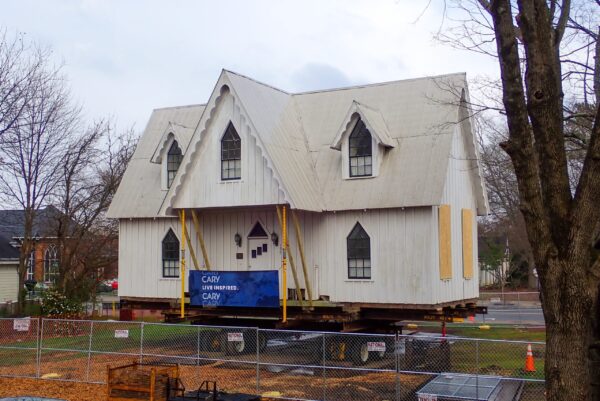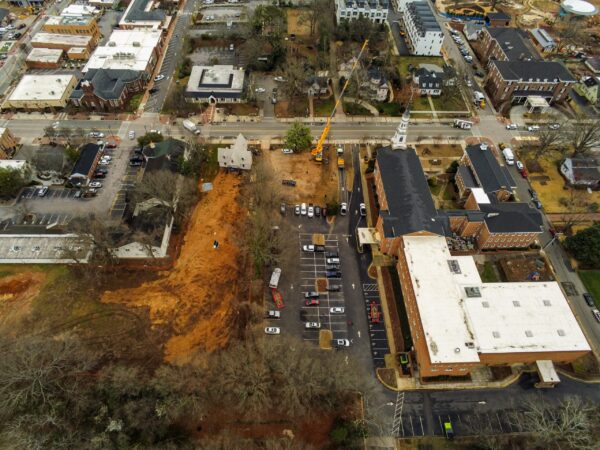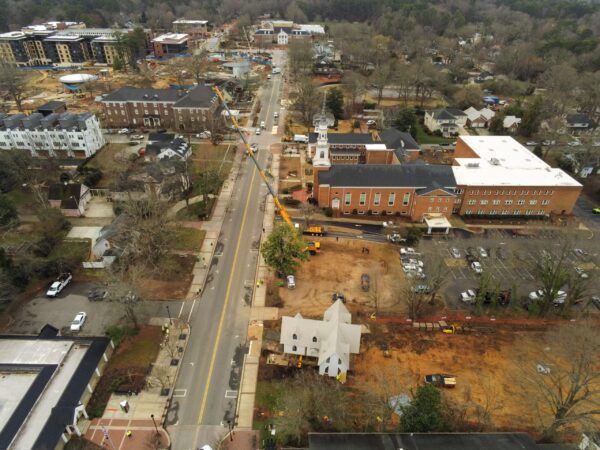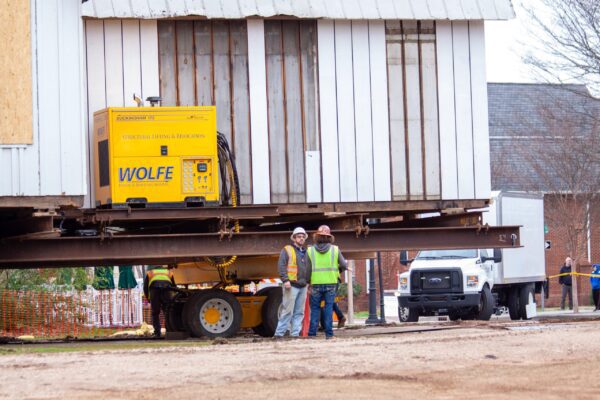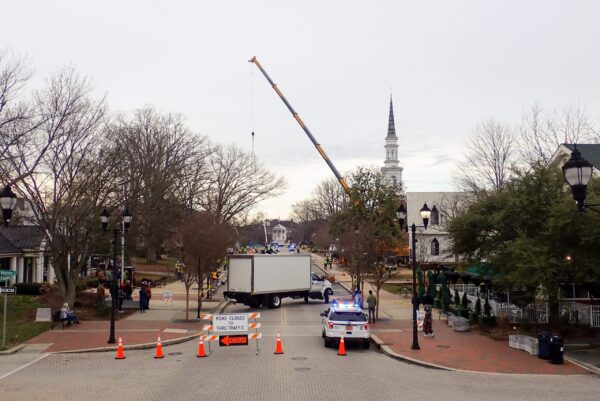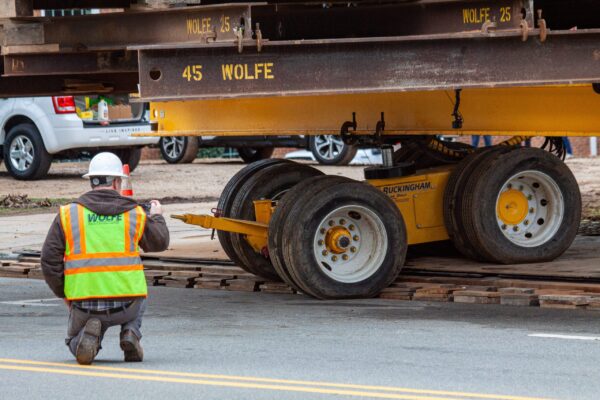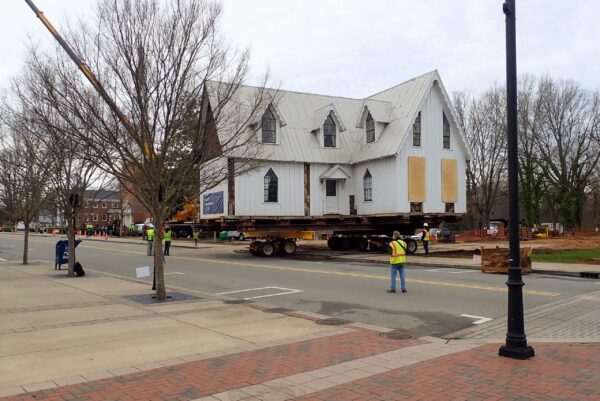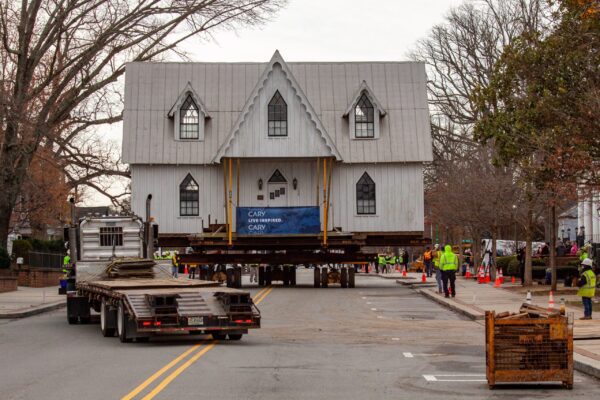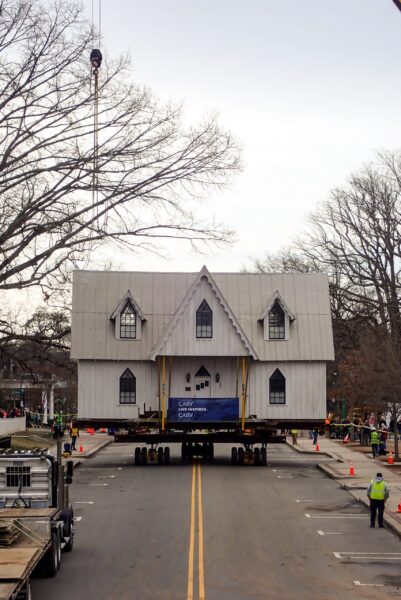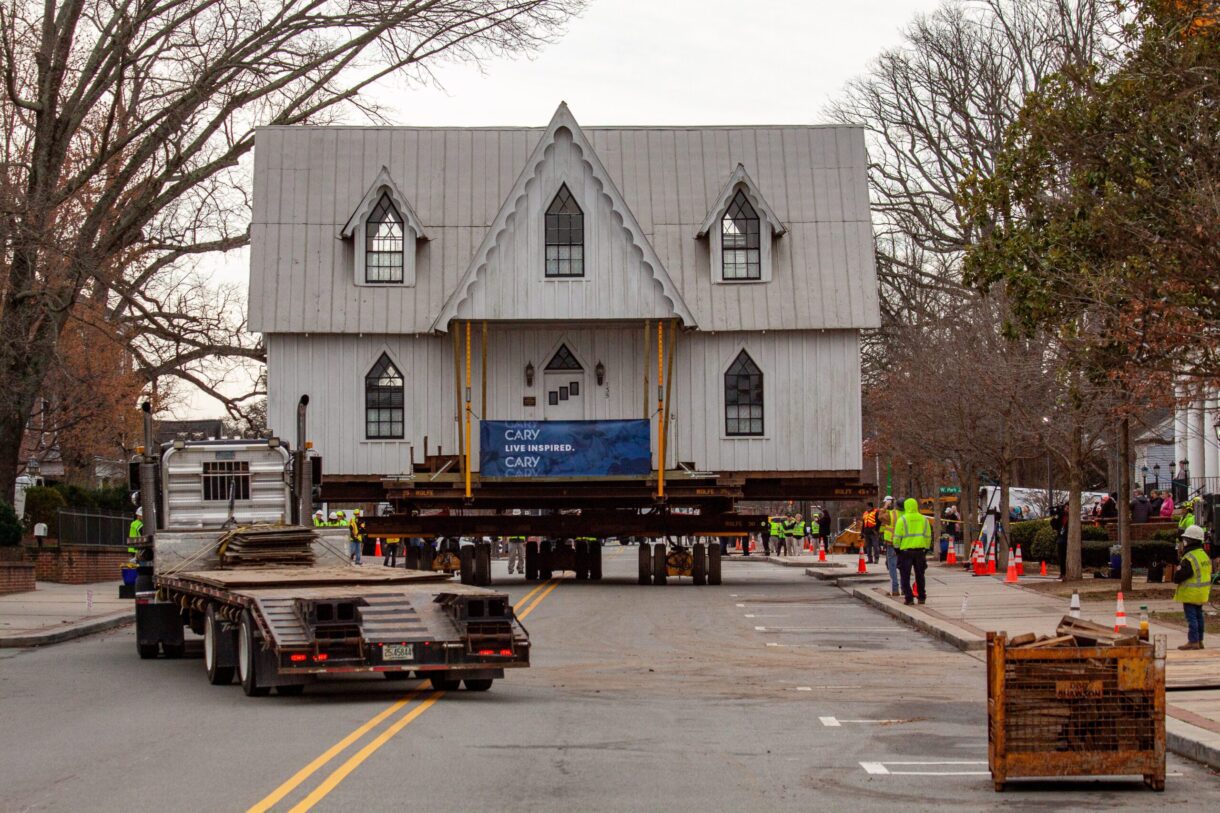
Can new development and historic preservation go hand-in-hand? A current WithersRavenel project with the Town of Cary emphatically says “yes.” The unique collaboration not only shines a spotlight on the power of community, but also involved a more than 150-year-old home being moved across Town last week.
The historic Ivey-Ellington House is even older than the Town of Cary itself. An agreement by the Town to develop the property where the circa 1870 home was located on West Chatham Street meant the house needed to be moved to be preserved as the second-oldest remaining structure in Cary.
The Town decided to move the historic home to the site of the former Cary library on South Academy Street, which is across from where the new downtown Cary Park is being constructed. This new location is more prominent than where the home was for the last 150-plus years, set back from Chatham Street and perhaps a little out of place as other Cary development overshadowed it.
Changing landscape in Cary
Uniquely, WithersRavenel is working on both Cary sites. The Northwoods Jordan mixed-use project is planned where the Ivey-Ellington House was located. Most of a block of downtown Cary will become a parking deck, office building, and apartments. WithersRavenel is also working on the site plan, stormwater, and landscape architecture features at the new location for the Ivey-Ellington House – in addition to our company’s contributions across the street at the transformative Downtown Cary Park.
Client Experience Manager Ed Tang, PE, and Landscape Architect Daniel Whatley, PLA, are two of the WithersRavenel professionals involved in the projects. The biggest challenge was obvious.
“How do you move a house that’s, you know, 40 feet wide? How do you do that within the middle of a downtown?” Ed said. While WithersRavenel was not involved in the finer details of the move, the process involved clearing woods behind the Ivey-Ellington House property to take a route that would require less street travel and sharp turns during the journey through downtown Cary. The Town planned extensively for the move, which involved road closures, streetlight and sign removal, and preparation at the new site.
For the move of the house itself, the entire structure was lifted off the ground and placed atop steel beams, planks and wheels, then slowly and carefully guided to its new location. There were other challenges to the move, as the topography was not flat and the house required some structural preparation pre-travel. The process attracted onlookers throughout the downtown Cary area.
Preservation with pizazz
By opening the home’s property for development, the urbanization of downtown Cary continues. But the Ivey-Ellington House will live on at its new site, enhanced by a site plan that recognizes history and nurtures the environment.
“It’s almost like you’re stepping back in time when you enter the site,” Daniel said. “You’re leaving this big, bustling town all around you and coming into this little site with an historic-looking landscape, plantings, and gardens around this historic house. You’ve also got all kinds of modern (stormwater) technology hidden right below the surface everywhere you’re walking. It’s cool, that mixed dichotomy between old and new.”
Other improvements planned for the Ivey-Ellington House and its new location include ADA accessibility features along with a robust landscape. Plans include hardscape gardens, walkways, and plazas so people can walk around the home and site, viewing it from all sides and making a visit an immersive experience. A footbridge over a rain garden embraces the unique stormwater design plans for the site. The landscape design was a collaborative process, involving WR and Town staff along with a local horticulturist who offered input on historic plants and design considerations.
“It’s not just about saving a house – it’s about transforming it and its new site,” Daniel said.
The Town of Cary’s long-term plans for Ivey-Ellington House are still undetermined. Initially, the home may be used as a parks and recreation office as construction continues nearby at Downtown Cary Park. Possibilities for the future include a Town Welcome or History Center. Without knowing the Town’s ultimate plans for the site, WithersRavenel tried to instill some flexibility into the site design.
More work to be done
WithersRavenel’s work with the Town and the Ivey-Ellington House continues. The first phase of the project basically ended with the home’s move. The second phase involves getting the home solidly at its final resting place and incorporating the previously designed stormwater features and landscape architecture on site.
Ed and Daniel were excited by the first phase of the project, which included contributions from many WithersRavenel team members. “It was cool to not just save this house because of its historical significance, but to actually see it being moved,” Ed said. “You can’t say every day, ‘Hey, I saw how a house got moved down the street.’”
Most importantly, Cary’s decision to move and preserve the Ivey-Ellington House is indicative of the Town’s commitment to recognizing and preserving some of the remaining echoes of its past. “You’re giving your community a lot more character at the end of the day,” Daniel said.

